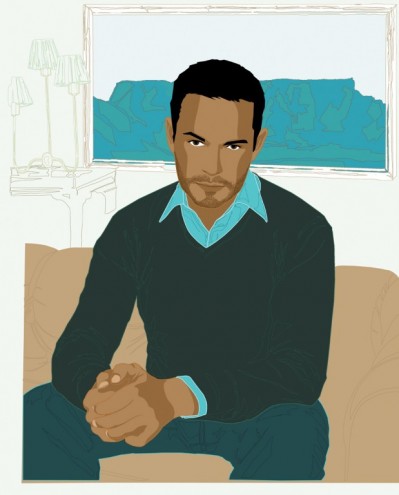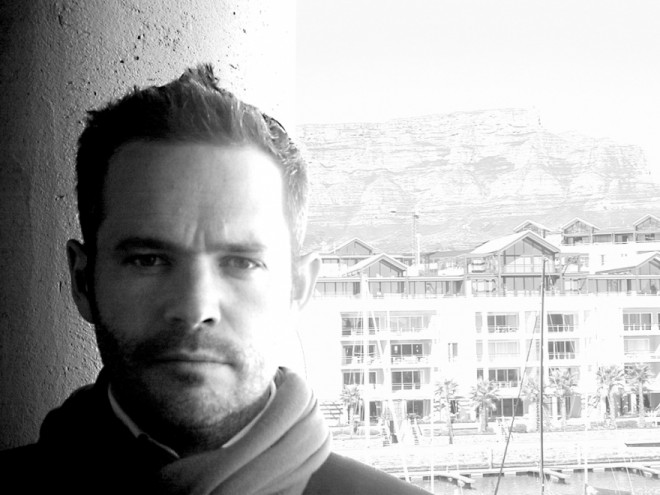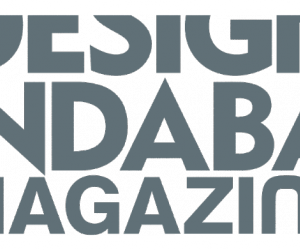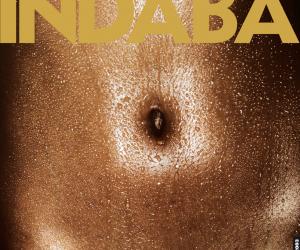Part of the Project
First Published in
Design Indaba: Tell us about the road to Wallpaper?
Tyler: The road to Wallpaper was perhaps not typical of publishing, because it was not something that came out of corporate retreats with magazine executives who elected to launch a new title in the lifestyle or design sector.
I had the idea that there was room for a magazine, which perhaps selfishly, was talking to me. That was in 1994 in London and I was looking for something, which was about urban living. '93 and '94 was a time when the Henley Centre for Forecasting identified, and went on the record as saying, that they were really seeing British cities being re-urbanised and that the great exodus to the suburbs was actually reversing, people wanted to live in cities again, they were very modern and exciting. I think using that as general ammunition, and just the general excitement that London felt at the time…
The whole Labour Party-constructed Cool Britannia thing?
No, it was pre that. Cool Britannia wasn't until '97 or '98, but it was about the vibrancy that London had at the time, and also the feeling that I had regarding my relationship to friends who lived in Copenhagen, Milan, Paris or Vienna, whereever they happened to live. We connected in a certain way, and obviously all communicated in the English language and there was a different sense of Europeanness, in that I felt I had a lot more in common with someone that lived in Vienna, then I did with someone who lived in Manchester. All these things were swirling around my head in '94. I had just been shot in Afghanistan and had spent a lot of time in hospital thinking of what I wanted to do.
What were you doing in Afghanistan?
I was working as a journalist covering the conflict and the activities of the aid organisation, Médecins Sans Frontières in Kabul. We were ambushed and I was shot twice, along with my interpreter who was shot once, in the back of the head. I spent a long time in hospital in London really stressing about what I wanted to do. I knew I wanted to stay in journalism. I knew that I also wanted to go into business myself, I did not want to be at the hands of a major publisher moving forward, and that was really the beginning and the end of it. It was my time spent in hospital that I got the idea for this [magazine]. Then I said "OK, I want to go into business for myself. What are we going to do?" There was some ideas floating around, interesting concepts for a magazine. It took me from about '94 to '96 to raise the funding, develop the idea and secure the advertising to get up and running.
There is an urban legend that up until the day you printed the magazine, the financial status of the company was pretty shaky?
It was awful. We ran out of money when we were on press basically. Even though the advertising was there, but that does nothing for your cash flow. Particularly when most of your advertisers are Italian!
And pay 60 days…
Or 90 days or 120 days later. But at the same time The Guardian devoted a spread to the magazine the day it came out, and the New York Times covered it and for some reason it really captured people's imaginations.
Also part of your capability to leverage that kind of PR?
No, I think that people were captured by interesting idea and that's how it got going. As much as I thought it would be a magazine that would play to the UK audience it was apparent very quickly that it really touched a chord with people who lived in Stockholm, Copenhagen…
And downtown Cape Town.
And downtown Cape Town and Hamburg, and wherever else. And the magazine took off in Sydney and Melbourne, and then we realised we hadn't a UK magazine that was selling around the world, but we happened to have a magazine that was selling around the world which, for whatever reason, was based in London. I think we could quite easily have been based anywhere.
When did you get that secure feeling, that you had passed having creditors yapping at your heels and you went into a safe zone, was it issue two or three?
No, it was issue five when we sold the magazine to Time Warner. Then of course we had no cash flow problems. We sold it on the cusp of issue four. Issue five was their first issue, they produced that issue.
How did that come to pass, did they approach you?
I approached them in the very beginning, when if it was just a paper dummy floating around. And they passed on it. Then around issue four, I went back to New York and a bit of bidding war ensued between Fairchild, Condé Nast and Time Inc. Time Inc. had the best pitch. They said: "We know you're talking to Condé Nast and you can go to them, they know how to do a magazine like Wallpaper, or you can go to Fairchild, and magazines are their thing, so they can do Wallpaper, or you can come to Time Inc. and we don't have a fucking clue how to do a magazine like Wallpaper. Where do you want to go? And the money was right, and the support seemed right. I liked the people that were there, and off we went.
So you cashed in your chips entirely and were on their payroll? Is that how it turned out?
Obviously I sold them the magazine but I kept a 17.5% stake in it, which I sold exactly a year ago today.
Now it's being produced by IPC, which is a division of Time Inc in London. What do you think of the new look for Wallpaper?
I have a very tight contract. I can't comment on it and am not allowed to talk about it until November 2003.
Great, you can tell all when you present at next year's Design Indaba event in February! But tell me, it's all very well having a supersonic brainwave, but you still have to execute it. How did you put the team together, the crack team of writers and designers who gave us the Wallpaper look and feel that we know so well? How did it all come to pass?
I think that the biggest stumbling block was raising the finance, convincing people of it, but when you look back, as difficult as it was, I don't think I knocked myself out either. It wasn't too major. I got money from the British Department of Trade & Industry and we got a small business loan, the same way as if you were going to set up a bicycle repair shop or a bakery. Obviously a magazine launch is a very high risk.
Did you have any angel investors?
No
So there weren't too many people cashing in their chips when Time Warner came around?
No, my boyfriend at the time, Patrick Cox, put money into the title, but I think he was already convinced of my talent and abilities which is why he got involved. He could have done his own thing just for the hell of it. I got some money from my family, but we're not talking great sums, but there were no fairy godfathers in the background who pumped money into it. I was very clear at the beginning that we were not going to exploit people. Everyone was paid properly from the very beginning. Not huge salaries, but they were all able to make decent money. I wanted to have a level of responsibility in doing this. Okay fine, maybe we were doing this out of a front room in Chelsea, which all became part of the mythology of the title as well. I would also say that it was a very tight group to start and it stayed that way for some time, and the people that I surrounded myself with, as I continue to do, are people who are friends. The fashion director Andrea Curtis, is someone that I've known for a very long time, Helen Pippins who was my assistant and editor at large, and a best friend. Jennifer, whose counsel I really trusted and Paul de Swart, who was our first publisher, worked in the catering business, and I always felt very convinced that if Paul could convince department stores and major retail brands to part with far too much money for prawn canapés, then he can also do the same with advertisers. It's always been my policy to hire on potential and not necessarily on what someone's CV says.
The whole magazine has an element of glamour about it. People on planes, trains and automobiles - going to the furthest reaches of the planet. How much of that was affected and how much was people really going out there and seeing it and doing it?
It was always 100% people doing it because I think that's what set us apart. We didn't accept press trips, or if we did accept them they could not come with strings attached. If we didn't like Mauritius then we wouldn't be writing about Mauritius. I think that's also why the magazine was able to build up such a loyal following, because people would pull out or photocopy or scan page 63 and they would say "I want to go and try that shop when I'm in Los Angeles".
I used to take out the Navigator segment and put it into different files.
Exactly, I think that was what made the difference. It wasn't just taking the press releases as gospel and re-printing them, as most magazines are guilty of. I think it was also injecting a bit of fun and humour. I always thought what was interesting about the magazine was that you could read it on a number of different levels. There were those people who really used the title because they were at the top end. There was one reader who I would say was in competition with the magazine and wanted to say "Oh my God, how could you miss the new Japan Airlines lounge at Osaka airport, it is really fabulous and you haven't covered it yet" and we would say it's in the next issue. Or there would be the next person who I think would read the magazine just because they liked the assured, very cocky, and the occasionally camp voice that it had. And then there are those who may not be into any of those things, but just thinks it's a fun, saucy read. Or there is the other person who saw it as a very aspirational thing and wanted to follow everything in the magazine, but perhaps couldn't afford to do it. He wouldn't experience the new airline lounge at Osaka airport, but treat it as a consumer bible where he wants to dive into those pages and that's the very best they can do. The fact that the magazine could do what it was supposed to do, and that was to not just be a consumer tool but to be an escapist tool. Wallpaper was an enormous exercise in escape for one type of consumer, and it was a catalogue for living for someone else.
Looking at the initial successes, did you ever think it was going to be that big to start off with?
I didn't think that it would gain this type of cult following that it did, and I never thought that I would go to Sao Paulo and be feted by the entire creative community there, or that you could go to Reykjavik and use your first name to get into any club. That part of it was quite remarkable. If you had asked me that when it had launched, I would have said no.
Are your friends still part of your team or have they gone on to Time Warner, or are they involved in your current projects?
Everyone I count as close and loyal is no longer there. The day I left 23 other people left too, because the understanding of the brand had obviously changed.
Let's just talk about your current projects. What are you doing now, and what's the next big thing on your horizon?
In looking at my departure I decided that we had spent a lot of time and effort in building a really nice little business with media, and I said "Look, I don't think this is core business to you, so you keep the magazine, you buy my shares out, and I'll take the creative agency with me." Take it, not buy it. When the negotiations were going on, we had won the business to re-brand Swiss Air and create a new national carrier for them. Those numbers became very attractive to Time Inc and that's what delayed the deal.
I also decided that maybe 14 years in London was perhaps enough and also time for a bit of a change so I moved to Switzerland (but also recognised too that it was very hard to run a creative business, in terms of scale, but with the type of influence and leverage that we like to have to do out of Zurich - so the headquarters are in Switzerland but the factory is in London). Wink evolved into a business which is mainly a creative consultancy in the truest sense because we can do everything from writing business strategies for companies to re-branding, coming up with new corporate identities, to doing custom publishing, to handling public relations, to consulting on other magazines and how to fix their editorial, straight through to doing traditional advertising or packaging or design.
If I look back to 1998, it went from having one client, which was Banana Republic in the United States, to then having Selfridges as an intelligence client (that we were selling intelligence reports to and then getting their advertising campaign and their publishing work, so it really has grown). It grew from a couple of retail clients, and now today it's the advertising campaign for Bally, to new corporate image, to designing credit cards for a Swiss bank, to being down here with Woolworths, consulting for that brand.
There's a completely different way of running a business when you are the entrepreneur, you have the control, you decide what you want to put on a page, and to hell with the industry, but when you are in agency-orientated work and the client is paying for your time, etc, it's a whole different ball game. How have you made that transition?
Well, who knows what this turns into, but we are paid to tell clients exactly what we think. We are very transparent, they know what they are going to get. Things may be different for someone who wants a fashion advertising campaign, but I think people know what they are going to get. Wallpaper has been such an amazing portfolio for us. You are always going to get an optimistic, humorous view of the world. You are not going to get Hoxton grunge, you are not going to get Parisian fashion.
I think that Wallpaper was an excellent exercise in market research and because I think in the face of a lot of comment from the naysayers that this market doesn't exist and that you can't go and do a magazine for people in Tokyo, LA, Toronto, London, etc. And they were clearly wrong and I think whatever we would do next would talk to potentially a global audience who is linked in terms of their taste, their travel habits, the way they socialise.
A lot of what you mention is media-centric. How about providing a product for that particular target market, going beyond just leveraging media opportunities?
Yeah I mean if it came along great. In September we are doing our first licensing agreement. We already have the agreement for our first product launch which is something called Winkcloth, done with Bernhart Furniture in the United States. It's a line of upholstery fabric. We are doing it with a graphic designer from Switzerland, who did all the upholstery for Swiss, and it was out of that experience that we are working with her.
What are your initial impressions of Cape Town? This is your first visit to South Africa?
I've been to Namibia before, about 11 or 12 years ago, and I went to Walvis Bay where I got a South African stamp in my passport because it was one of your territories I think? But of course Namibia is not South Africa. Everyone said to me how if you love Sydney, you'd go nuts over Cape Town. That hasn't happened yet, but it's only been one day.
I did a retail tour around the city today, but I think that retail tours are always good cultural tours. Just looking at retail in general - everything. I did everything from Century City, to Dean Street, to Constantia.
I liked it because it had an outpost feeling really and it absolutely reflects that it is the tip of the world, that was the part I really liked. And I like that the city centre doesn't feel like something else, that its not trying to be Chicago and I liked that part and I like this real feeling of legitimacy here - that is one thing I really enjoyed. What surprised me today is how the upmarket shopping areas is all so "mallified".
The other surprise was to see what modern South African architecture is. It's not as exciting as New Zealand or an Australia - and driving around Johannesburg yesterday I saw… well these Sol Kerzner types of buildings. Like building a Tuscan village on the outskirts of Johannesburg. This type of colonial revival of architecture is so wrong!
Catch more of this and the full story of Wallpaper at the 7th International Design Indaba next February www.designindaba.com











